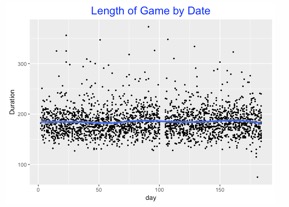“Major league baseball misuses the 80/20 rule, suggesting heretical potential changes on extra-inning games, which might drive length of extra-inning games but not affect other games”
By George Taninecz, VP of Research, The MPI Group
Rob Manfred, chief operating officer of Major League Baseball, must be a fan of Vilfredo Pareto. It was Pareto who recognized, in the late 19th century, that 80 percent of the land in Italy was owned by 20 percent of the population. The work of the Italian engineer and economist was recognized in the 1940s by Joseph M. Juran, who named his “80/20 rule” after Pareto, used it to describe the law of the vital few, and expanded the concept to business.
The 80/20 rule can guide our thinking every day, but we often ignore it: A few personal expenses (housing and transportation) consume a large share of a family budget; those living in a house beyond their means and missing expensive car payments won’t balance their budgets by clipping coupons. Senior executives in a company account for a disproportionately high percentage of compensation; businesses trying to lower payroll won’t do so by firing a few frontline workers. A fraction of your work produces most of the value; working harder at the other stuff — instead of finding more high-value work — only makes you tired.
This spring, attention around the national pastime has been on the length of games (or “pace of play,” as the league refers to it). The average length of a game declined by about 7 minutes in 2015 with some help from the league office — reducing the time between innings and limiting the time that managers and coaches can visit the pitcher’s mound. Nonetheless, the average length rose in 2016 to slightly more than 3 hours.[1] This, of course, caused official concern, and led to rule changes this spring, such as limiting the time that a manager has to challenge an umpire’s call to 30 seconds.
One flawed idea floated by the league, however, is rooted in the 80/20 rule: an attempt to shorten extra-inning games by placing a runner on second base at the start of the 11th inning for each team’s at bat, thus theoretically bringing about a quicker end to longer-lasting extra-inning games. Manfred sees those vital few extra-inning games pushing up average game times. (We’ll put aside the argument that both teams could get that runner in from second base, and the game would continue.)
In 2016, 185 extra-inning games accounted for less than 8 percent of all games played, and they probably lasted longer than the other 2,243 games played.[2] In applying the 80/20 rule, the commissioner’s office is focusing it on the wrong statistic: even if extra-inning games did increase the average game time, did they impact the median game time (i.e., the typical game times experienced by most fans)? Probably not. In fact, the length of nine-inning games also increased in 2016. Quit worrying about the 8 percent.[3]
The graphic below, developed by Jim Albert,[4] illustrates this point: The blue line represents the average. But note the tight concentration around and below the horizontal middle (a cluster that essentially surrounds a median) and the dispersed pattern of games exceeding 200 minutes (this consists of extra inning affairs and probably some rain-delay games). The vertical gap in the middle is the All-Star Game.
Instead of changing rules for extra-inning games to bring down the average time of all games — and heretically altering baseball in the process — Manfred should, at most, consider game-shortening efforts that affect the typical games, as the league has been doing.
Or here’s a thought: why not just “Play ball!” for as long as necessary?
© 2017 The MPI Group
[1] “Major League Baseball Miscellaneous Year-by-Year Averages and Totals,” Baseball Reference
[2] Ibid.
[3] Ibid.
[4] Jim Albert, “Game Duration Exploration with Game Log Data,” Exploring Baseball Data with R, Jan. 4, 2017.


